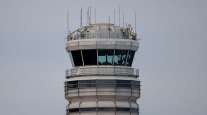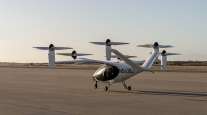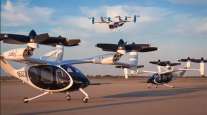FAA Says Future Planes Will Need to Reduce Carbon Emissions

[Stay on top of transportation news: Get TTNews in your inbox.]
WASHINGTON — The Biden administration proposed June 15 that future planes produce lower levels of greenhouse gas emissions before they can be certified by federal regulators.
The Federal Aviation Administration proposal would increase fuel-efficiency standards for jets and large turboprop and propeller-driven planes that it has not yet certified, and for planes built after Jan. 1, 2028.
The FAA will develop means to determine the relationship between fuel efficiency and reductions in carbon dioxide emissions.
The rule, if made final, would cover large airliners under development, including Boeing’s 777X and new versions of its 787 and the Airbus A330neo, plus various business jets and other planes. The FAA said the rule would bring the United States in line with carbon dioxide emission standards set by the United Nations’ aviation organization.
We want your feedback on our proposed rule to lower greenhouse gas emissions from large aircraft in our nation's airspace. This move brings us closer to our goal of reaching net-zero emissions from U.S. aviation by 2050. Submit comments by Aug. 15 at https://t.co/6scy3tzQdH. pic.twitter.com/7YjHIqsquj — The FAA (@FAANews) June 15, 2022
The rule would not cover planes that are already flying.
Planes are a small but growing contributor to greenhouse gas emissions that are tied to climate change. The FAA said civilian planes caused 3% of U.S. emissions before the pandemic.
Boeing, meanwhile, hinted that it’s considering a cargo-hauling version of its 787 Dreamliner to eventually replace 767 freighters, whose engines won’t comply with tougher emissions standards that take effect in 2028.
“That’s a natural place for us to look,” Brian Hermesmeyer, freighter customer leader for Boeing’s commercial airplane division, told reporters in a briefing near its plant in Everett, Wash.
He added that the Arlington, Va.-based planemaker typically studies the market demand for potential freighter versions of all of its commercial jetliner families as it plots product strategy.
The Dreamliner is the company’s first jet whose airframe is made of barrels spun from carbon-fiber. That creates a technical hurdle for engineers, who would need to figure out how to reinforce the structure to cut out larger doors needed to load and unload cargo.
The company has planned for 767 freighter deliveries through the end of 2027, when the new pollution rules will potentially clip both the 767 and the current 777 freighter model. The mid-size 767 jetliner also serves as the basis for an aerial refueler for the military, the KC-46A.
Contributing: Bloomberg News
Want more news? Listen to today's daily briefing below or go here for more info:




